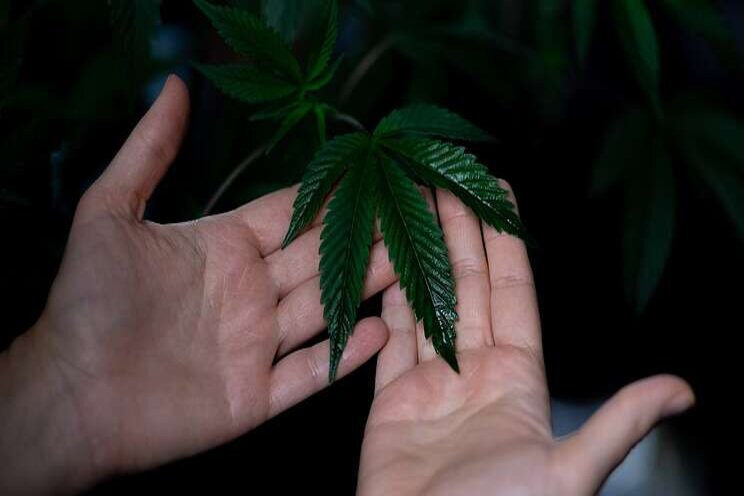Is growing weed sustainable? The answer is complicated.
Added on 06 May 2021

Researchers across the country, including at the University of California Berkeley's Cannabis Research Center, are interested in examining how cannabis cultivation impacts the land and environment. Ariani Wartenberg, a postdoctoral fellow at UC Berkeley, is an author of a recent article that reviewed all studies that have looked at the environmental impacts of cannabis. "I was surprised, actually, at how few I found. I expected there would be more," Wartenberg says of the studies they were able to include in the review paper.
The reasons that the impact of cannabis cultivation on the environment hasn't been studied much is likely twofold, Wartenberg says. Looking into federally illegal substances is tricky, even when it comes to things like their impacts on mental health. The stigma against these substances means that empirical studies of the environmental impact of cannabis didn't become mainstream until about a decade ago.
Studying cannabis is important because it isn't lumped in with traditional agriculture as far as regulations go, says Van Butsic, study author and Cannabis Research Center co-director. "One of the reasons why we do research on cannabis is because it has a sort of unique and separate social and cultural history than other agricultural crops," he says.
While the environmental impact of cannabis cultivation is a new area of research, early studies show that sustainability needs to be an important consideration of cannabis cultivation. Research from Colorado State University shows that one serving of THC has a much higher greenhouse gas footprint than a serving of beer, wine, or cigarettes. One of the biggest reasons for this disparity—energy-intensive indoor growing.
In Wartenberg's review paper, the researchers identified six major areas to look at to assess the environmental impacts of cannabis: air pollution, pesticide use, water use, energy use, land cover change, and water pollution.
Some of these impact areas, the researchers say, apply to any sort of crops, such as water use and land use. But because cannabis is easy to grow almost anywhere, it is often grown indoors. Eighty percent of Colorado's one million pounds of cannabis grown annually comes from indoor farming. When farmers grow plants without natural sunlight, they can expect more of a strain on energy use than outdoor or mixed-light methods.
One primary concern with indoor growing is energy use for lighting and air circulation. A recent study shows that indoor cannabis cultivation is on its way to becoming a significant greenhouse gas producer in the United States. Colorado's weed industry accounts for 1.3 percent of the state's total greenhouse gas production. That's about the same emissions from coal mining in the state, according to the study authors. The same study found greenhouse gas emissions from cannabis cultivation vary based on the region of the US, with the highest amount coming from cannabis grown in the Mountain West, Midwest, Alaska, and Hawaii. Meanwhile, southern California and coastal regions make for less demanding growth regions thanks to mild climates.
Other studies have shown that growing cannabis can also impact air quality. Cannabis plants, like all plants, emit gasses called biogenic volatile organic compounds, or BVOCs. A 2019 study in Colorado measured how much BVOCs are produced by cannabis cultivated indoors. These gases are a precursor to ozone formation, and further research showed that in Colorado, indoor cannabis cultivation could increase ozone pollution. Ground-level ozone is a pollutant that causes coughing and airway inflammation, so more research is needed to determine if indoor cannabis cultivation poses unique air quality risks.
Quantifying the overall environmental impact of cannabis cultivation is difficult because of illegal or trespass farming done without state permits. It is difficult to quantify how many illegal farms there are in any state. Still, in northern California, Butsic says, it is a lot. "In northern California, where we've done the finest grain research and the most research, over two-thirds of the farms are not permitted," he says.
An illegal grow operation isn't necessarily bad for the environment, Butsic says. Many growers have been operating for decades and simply don't have the money to spend on the permitting process. But on the other hand, an illegal grow operation doesn't undergo the same testing for pesticides as a permitted site in California. How rigorously states measure pesticides in legal medicinal or recreational cannabis varies a lot from state to state and is far from consistent. There are instances where dangerous rodenticides have been found in animals near trespass cultivation sites. There is also not much research about how pesticides applied to cannabis may impact human health because those chemicals could directly impact the lungs when smoked.
The group at Berkeley and other nonprofits such as the Cannabis Certification Council are trying to bring sustainability and environmental impacts to the forefront when they talk with policymakers. The Cannabis Certification Council has a #Whatsinmyweed campaign that urges consumers to care more about how their cannabis is produced and distributed. The group also provides a list of existing third-party environmental certifications consumers can look out for.
But with cannabis regulations left to individual states, and a large number of illegal grow operations, the energy, pesticide and water use of grow operations as a whole will likely remain nebulous—at least for now.
Source and Photo Courtesy of Popular Science
Source: Popular Science
More news















